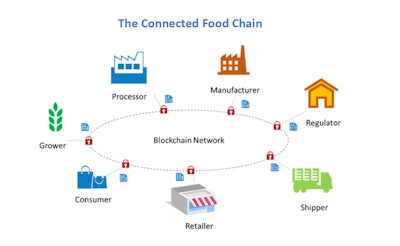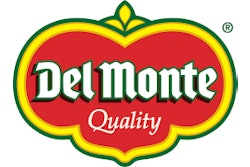
Improving Efficiency and Efficacy in Food Safety
Food and grocery chains across the United States have recently been receiving more attention than usual. Due to notable instances like the record-setting government shutdown and numerous food recalls, more organizations involved in the food value chain are feeling heightened pressure to keep American foods safe for consumption.
Unfortunately, current processes and technologies do an inadequate job of tracing the source of origin across the food supply chain ecosystem from farm to fork.
Enter Blockchain
The ongoing development of this burgeoning technology continues to show promise in solving the changing environment of food safety and traceability – a highly complex and often deeply debated topic that extends from family dining tables to the top levels of federal government.
Food chains have historically been challenged when it comes to traceability and visibility. While retailers may know which suppliers are producing a specific food product, they may not be able to trace it to secondary and tertiary suppliers that extend all the way back to the farm. In addition, the hand-off of data and knowledge across this ecosystem inherently causes complexity and latency.
Traditional View of the Connected Supply Chain
As noted by Shachin Prabhat, an expert within Infosys Consulting, “the situation is further complicated by a significant presence of brokers, acting on behalf of other small-scale suppliers.” This creates a dynamic challenge for retailers to understand the full origin of products, resulting in significant time loss and manpower dedicated to resolving problems in major outbreaks and product recall situations.
Blockchain can help retailers improve the efficiency and efficacy of their food safety programs. While blockchain remains a buzzworthy topic, thanks to conversations around cryptocurrencies like BitCoin, it is fundamentally a general-purpose technology bringing new visibility and opportunities across many business segments.
Enhancing Traceability
Within the world of blockchain resides the concept of a distributed ledger – and it is highly useful to solve the food traceability conundrum by enabling:
· All involved parties to update the ledger as a product moves from one node to another in the value chain, making information immediately available.
· All involved parties in the food chain to have visibility into the same version of the truth, reducing conflicts and confusion.
These two aspects reduce the latency in food traceability from days to minutes, as proven in recent pilots by several leading retailers, including Walmart.
An Opportunity Ripe with Benefits
The pairing of blockchain with other advanced capabilities can deliver significant benefits. When a potential outbreak occurs, speed is of utmost importance to synthesize information and minimize damage. This speed, along with accuracy of information, could mean potentially millions in savings and minimized reputational cost.
Food is rapidly becoming viewed in the same light as pharmaceutical products by the U.S. government. The amount of regulation and scrutiny will only increase as the food supply chain becomes a more complex ecosystem – coupled with an uncertain geo-political landscape.
Blockchain technology can play a major role in creating better transparency and traceability for all parties involved – and it can help retailers have the protection and safety they need to run a highly-successful, risk-minimized operation.

















